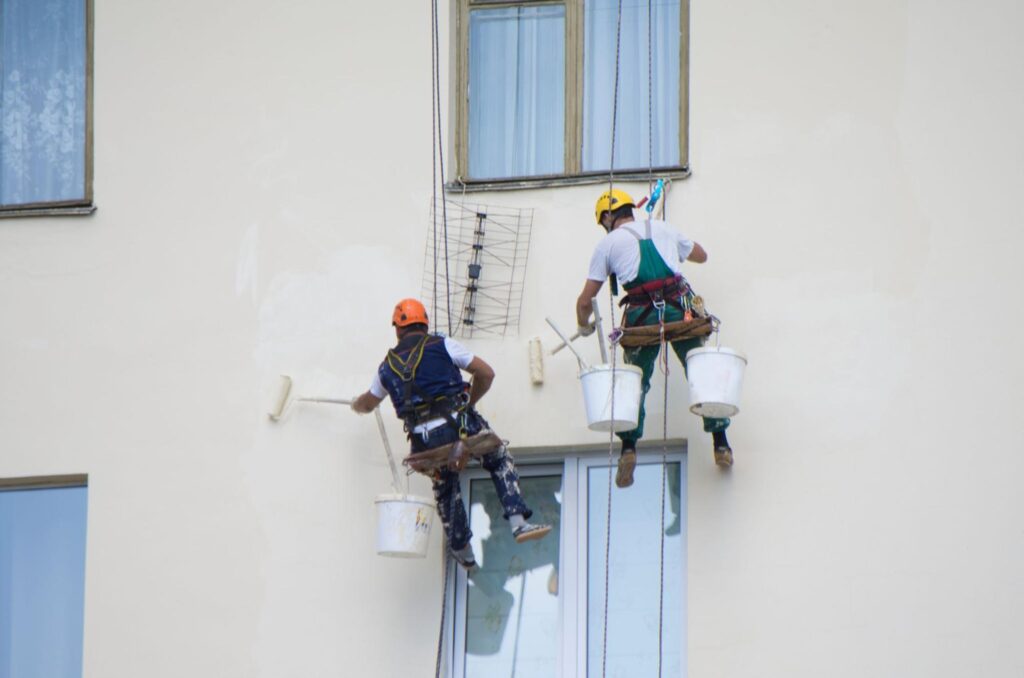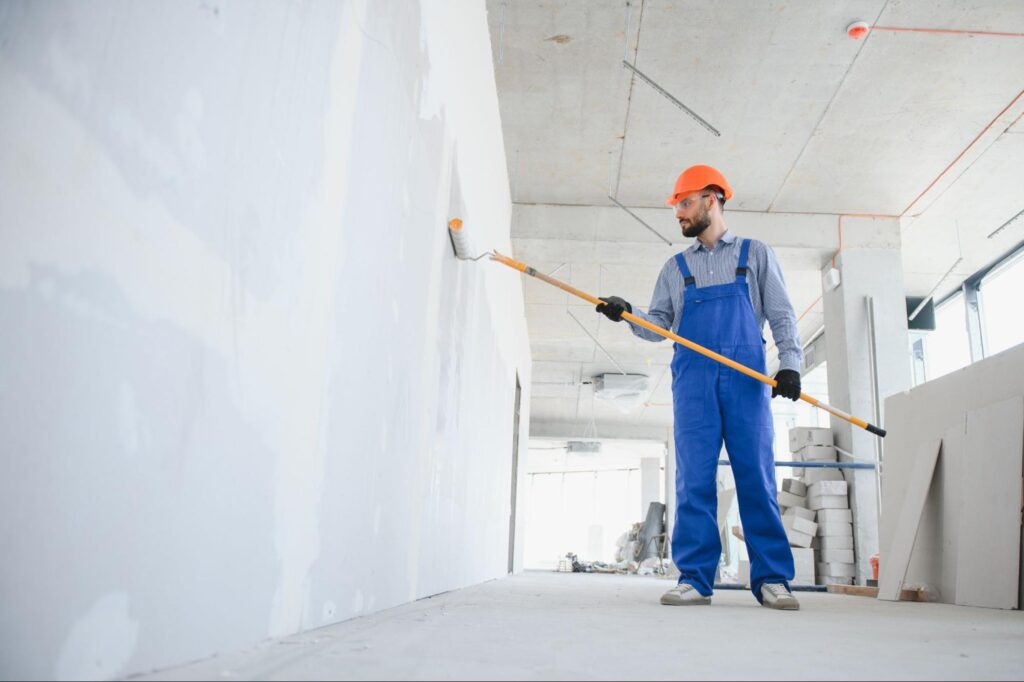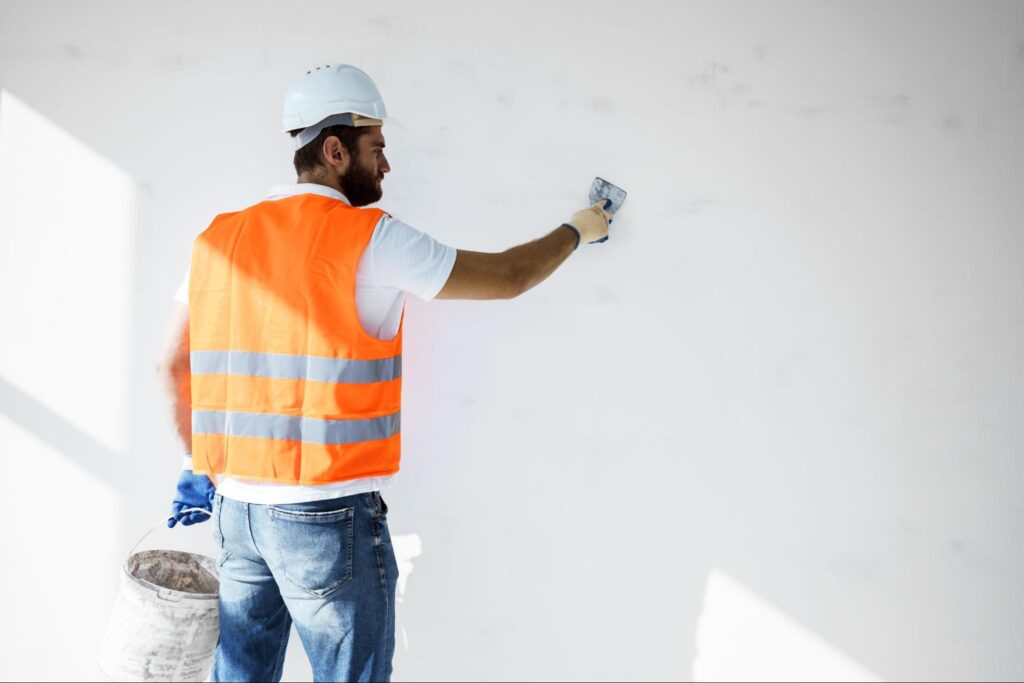
Commercial painting jobs aren’t judged by effort, but by results. Clients look at the finish, the durability, and how long it holds up. However, no matter how skilled the painter is or how high-quality the paint is, the surface underneath ultimately determines everything. Surface preparation isn’t just a step; the structure holds the entire project together. It determines whether the finish impresses or disappoints.
The Foundation of Quality in Commercial Painting
A flawless finish begins well before the first coat hits the wall. Commercial painting thrives on consistency, efficiency, and long-term durability. That kind of success comes from what’s beneath the surface, literally. Surface preparation builds the integrity of the entire paint system.
Surface Prep Sets the Stage for Long-Term Results
Without a stable surface, paint has nothing to hold onto. You’ll get peeling, flaking, and uneven coverage that won’t last. In commercial environments where the stakes are higher, those flaws are magnified. Proper prep evens rough textures, fills gaps, and smooths imperfections. After that, every layer becomes stronger and more consistent.
It’s Not Just Cleaning, But Engineering the Surface
Dusting or pressure washing is only the beginning. Prep involves scraping loose coatings, sanding, repairing damage, and applying primer. The methods differ entirely for concrete, metal, drywall, or wood. A professional painter knows how to match the prep to the material. That level of detail makes the paint last years longer.
Adhesion Depends on a Ready Substrate
Even the most expensive commercial paint can’t save a poorly prepped wall. If a surface is glossy or greasy, paint won’t bond, leading to bubbling, cracking, and fast failure. Surface roughening, such as sanding or etching, creates texture for the paint to adhere to. Proper adhesion begins before the roller makes contact with the wall.
How Proper Prep Shapes Commercial Painting Outcomes
A flawless finish isn’t just about the right color or sheen; it’s about achieving a seamless appearance. It starts with how well the surface is prepared to receive it. Skipping or rushing that step leads to short-term results. Strong, lasting outcomes begin with solid groundwork.
Surface Prep Impacts Every Phase of Commercial Painting
Preparation impacts not just the outcome but the entire process. From planning to execution, surface prep influences everything. It shapes timelines, budgets, and the smoothness of the work. Skipping it introduces a risk that shows up later.
Inspection Identifies Risks Before Work Begins
Every commercial building has unique surface challenges. Water damage, mildew, cracks, or previous coating failures must be spotted early. A solid inspection helps avoid setbacks after painting starts. Painters can plan for patching, sealing, or replacing damaged areas, leading to fewer surprises once the job begins.
Durability Starts at the Base Layer
Durability doesn’t come from just thick paint. It starts with how well the surface was cleaned, repaired, and primed. Any weak spots below can crack or blister under pressure. That base must be bulletproof for commercial properties with constant foot traffic or exposure. Without it, repainting happens far sooner than expected.
Schedule Management Depends on Smart Prep
The time it takes to prep a surface varies, but failing to allow that time throws off the schedule. Tasks like drying time for patched areas or curing primer must be accounted for. Rushing or skipping prep causes delays mid-project. Factoring prep into the schedule avoids last-minute panic.
It Affects Paint Color and Finish Quality
Color is more than choosing a shade; it’s about achieving a consistent appearance. Uneven surfaces absorb paint differently, altering the appearance of the color. A rough or glossy patch will stand out, even under uniform lighting. Surface prep aligns everything so the finish is smooth, clean, and accurate to spec.

Underlying Texture and Absorption Skew Final Appearance
Without proper prep, paint will absorb unevenly into the wall, making some areas appear darker or shinier than others. These inconsistencies ruin the visual balance of commercial interiors. Even minor flaws become distracting on large, open surfaces. Solid prep keeps the final finish sharp and consistent.
Primer Choice Impacts Color Accuracy and Coverage
The primer layer can significantly alter the appearance of the paint once it is dry. A dark base under a light color can dull its brightness. Similarly, uneven primer or skipped areas may show through after drying. Choosing the right primer ensures even absorption and hides old colors or repairs. That creates a clean slate so the new shade looks exactly as intended.
Mistakes Can Ruin Commercial Paint Jobs
Not every error is immediately visible, but most commercial painting failures are often due to skipped or inadequate preparation work. These missteps can be costly, time-consuming, and difficult to rectify. Worse, they damage trust with clients.
Cutting Corners Often Leads to Rework
Trying to save time by skipping prep is a losing strategy. You might gain a day now, but you’ll lose weeks later fixing failures. Recoating, scraping, and cleaning again wastes labor and materials. The cost of rework often exceeds the price of doing it right the first time. Clients also lose confidence when they see visible issues repeat.
Paint Failure Hurts Business Operations
When paint peels or fails, it disrupts the space. Office teams, retail shops, or tenants may need to pause work for repairs. That downtime affects revenue and damages relationships. Poor surface prep is often the hidden cause behind these headaches. A missed step becomes a much bigger problem later.
Cost Overruns Begin With Skipped Prep
A can of primer costs less than replacing damaged drywall, and the labor spent sanding is cheaper than repainting after failure. When budgets tighten, prep is often the first thing slashed. However, the irony is that poor preparation inflates the total cost. Quality work always starts with surface honesty, not shortcuts.
Prep Changes by Commercial Environment
Different spaces demand different approaches. No two buildings have the same wear, surface types, or usage, so preparation must be tailored to those differences. A one-size-fits-all approach rarely holds up.
Office Buildings Need Smooth, Clean Surfaces
In offices, walls frequently come into contact with chairs, briefcases, and human traffic. Paint needs to resist abrasion while maintaining a sleek and professional appearance. Prep involves sanding, patching nail holes, and priming repaired sections. That smooth base ensures a modern, uniform look. Any missed blemish stands out under commercial lighting.

Retail and Hospitality Spaces Require Durable Appeal
These environments mix visual branding with heavy use. Hotels, restaurants, and shops need surfaces that withstand cleaning and frequent touch. Surface prep must remove oils, food residue, or cosmetic buildup before painting. It also often includes antimicrobial primers or protective coatings, ensuring beauty and strength go hand in hand.
Industrial Settings Demand Rugged Preparation
Factories and warehouses are often exposed to heat, vibration, moisture, and various chemicals. Painting these environments starts with stripping contaminants and applying corrosion-resistant primers. Abrasive blasting or power tools may be needed to prepare metal or concrete. A clean, textured surface is crucial for coatings to adhere effectively under pressure. Without this, coatings peel under the weight of daily operations.
Healthcare Facilities Need Hygienic, Secure Coatings
Hospitals, clinics, and labs require surfaces that are easy to sanitize. Coatings must resist cleaners and support infection control. Walls may need antimicrobial additives and zero-VOC primers. Prep includes sealing cracks and joints to prevent bacteria buildup. These extra steps matter where cleanliness meets compliance.
Strengthens the Painting Ecosystem
Every layer relies on the one before it. That’s why surface preparation affects not just painting but everything tied to it. From warranty coverage to building a reputation, prep anchors the process. It’s not a side task, but the backbone.
Tools, Methods, and Skills Make the Difference
Not every surface can be treated the same. Using the wrong cleaner or sander can cause permanent damage. Skilled painters know when to hand-scrape versus when to power-wash. They also understand how temperature and humidity affect surface readiness. The right prep tools amplify both speed and quality.
Seamless Workflow Between Prep and Paint Teams
Prep shouldn’t stall other tasks on-site. Commercial painters coordinate with drywall installers, electricians, and cleaners to ensure a smooth workflow. Drying and curing times are mapped into the timeline. Communication keeps bottlenecks from forming. When everyone respects prep, jobs move faster with fewer disruptions.
Paint Warranties Depend on Surface Compliance
Manufacturers set strict guidelines for surface prep. These rules cover moisture levels, pH testing, primer selection, and other relevant aspects. Ignoring them voids warranty coverage, even if the paint was applied perfectly. That puts liability on the contractor or property manager. Following the spec isn’t optional; it’s a matter of protection.
Secure Lasting Results With Smart Commercial Painting Prep
Paint doesn’t fail because of color; it fails because the surface was wrong. Sealing every crack, priming every coat, and correcting every texture gives your paint a fighting chance. Start where it matters most if you’re serious about results that last and impress. Prep isn’t optional; it’s the real investment behind every lasting finish.
The right finish starts with the right knowledge. Explore the Euro Painting blog for expert guidance on every step of the job.

